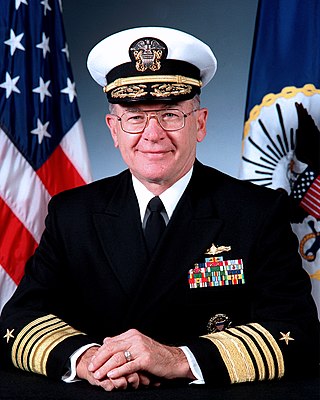
Vernon Eugene Clark is a retired admiral who served as the Chief of Naval Operations (CNO) of the United States Navy. He retired on July 22, 2005, making his tenure of five years the second-longest serving CNO behind Arleigh Burke. He currently sits on the board of directors of Raytheon and SRI International. In November 2009, he was selected along with former Secretary of Veterans Affairs Togo West by Defense Secretary Robert Gates to lead the military investigation into the Fort Hood massacre.
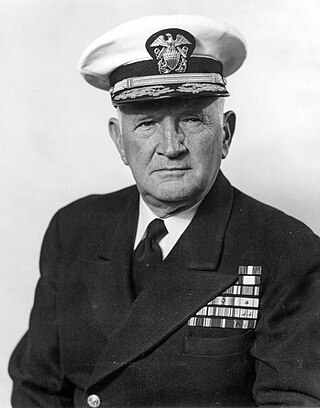
Jesse Barrett "Oley" Oldendorf was an admiral in the United States Navy, famous for defeating a Japanese force in the Battle of Leyte Gulf during World War II. He also served as commander of the American naval forces during the early phase of the Battle of the Caribbean. In early 1942, a secret group of senior Navy officers empaneled by President Franklin D. Roosevelt assessed him as one of the 40 most competent of the 120 flag officers in the Navy.

Edward Latimer Beach Jr. was a highly decorated United States Navy submarine officer and best-selling author.
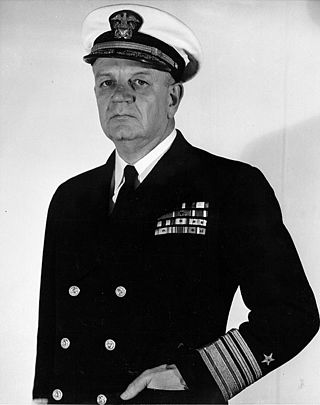
William Morrow Fechteler was an admiral in the United States Navy who served as Chief of Naval Operations during the Eisenhower administration.

Admiral John Lesslie Hall Jr. was a senior officer of the United States Navy, who served during World War II.

Admiral Joseph James "Jocko" Clark, USN was an admiral in the United States Navy, who commanded aircraft carriers during World War II. Born and raised in Indian Territory and a member of the Cherokee Nation, in 1917 he became the first Native American to graduate from the United States Naval Academy. Clark preferred to be called "J. J." or by the nickname "Jocko" instead of his full name.

Vice Admiral Daniel Edward Barbey was an officer in the United States Navy who served in World War I and World War II. A graduate of the Naval Academy, he participated in the 1912 United States occupation of Nicaragua and the 1915 United States occupation of Veracruz. While serving with the War Plans Section of the Bureau of Navigation in Washington, D.C. between the World Wars, developed an interest in amphibious warfare. In 1940 he produced Fleet Training Publication 167 – Landing Operations Doctrine, United States Navy, which would become the Navy's "bible" of amphibious operations, and would remain in use throughout World War II.
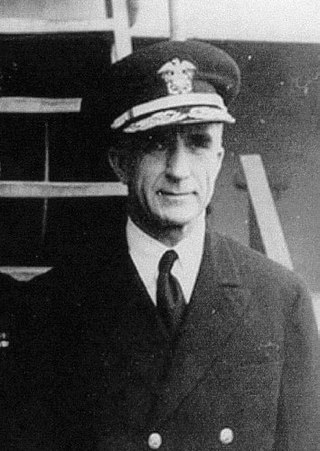
Vice Admiral Morton Lyndholm Deyo was an officer in the United States Navy, who was a naval gunfire support task force commander of World War II.

Richard Chester Macke was a naval aviator and a former four-star admiral in the United States Navy. He last served as Commander of United States Pacific Command (USPACOM) from July 19, 1994, until January 31, 1996. After his navy career, Macke served as a vice president of Wheat International Communications Corporation.

José M. Cabanillas, was a rear admiral in the United States Navy who as an executive officer of the USS Texas participated in the invasions of North Africa and the Battle of Normandy during World War II.
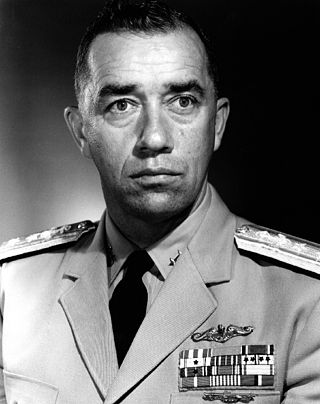
Eugene Parks "Dennis" Wilkinson was a United States Navy officer. He was selected for three historic command assignments. The first, in 1954, was as the first commanding officer of USS Nautilus, the world's first nuclear-powered submarine. The second was as the first commanding officer of USS Long Beach, America's first nuclear surface ship. The third was in 1980 when he was chosen as the first President and CEO of the Institute of Nuclear Power Operations (INPO) from which he retired in 1984.
William Woodward Outerbridge was a Rear Admiral in the United States Navy. He held the distinction of firing the first shots in defense of the United States during World War II.

Walter Stratton Anderson was a Vice Admiral of the United States Navy, who served as the Executive officer of USS Arizona in World War I and as Commander Battleships, Battle Force in the Pacific Fleet, and of the Gulf Sea Frontier, during World War II.

Wilson Brown, Jr. was a vice admiral of the United States Navy who served in World War I and World War II. Brown turned 60 in April 1942, making him one of the oldest American naval officers to serve in combat during World War II.

Admiral Herbert Gladstone Hopwood was a four-star admiral in the United States Navy who served as commander in chief of the United States Pacific Fleet from 1958 to 1960.

Admiral Jerauld Wright was an officer in the United States Navy. He served as the Commander-in-Chief of the United States Atlantic Command (CINCLANT) and the Commander-in-Chief of the United States Atlantic Fleet (CINCLANTFLT), and became the second Supreme Allied Commander Atlantic (SACLANT) for the North Atlantic Treaty Organization (NATO), from April 1, 1954, to March 1, 1960, serving longer in these three positions than anyone else in history.
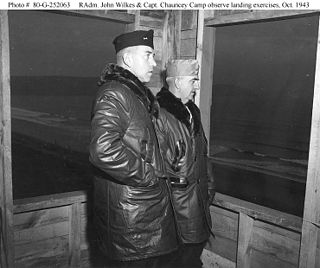
John E. Wilkes was a vice admiral in the United States Navy, who served in World War I and World War II. In December 1941 he was appointed Commander of Submarines, Asiatic Fleet. In 1944 Wilkes was commander of all ports in Northern Europe. From 1945 to 1951 he was the chief U.S. Naval Officer in Occupied Germany. He retired in 1951.
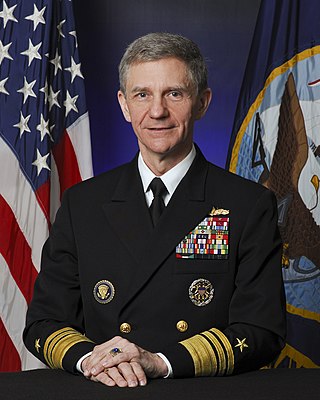
Philip Hart Cullom is a retired vice admiral in the United States Navy.

Dee Leon Mewbourne is a retired United States Navy vice admiral who served as 16th deputy commander of United States Transportation Command between July 2, 2019 and June 29, 2022.
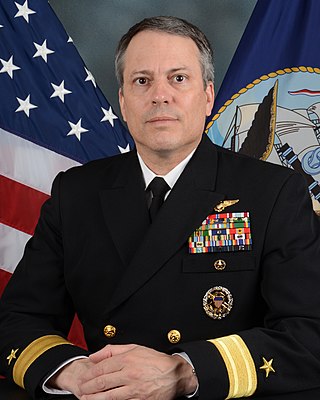
Paul C. Spedero Jr. is a United States Navy rear admiral and naval aviator who has served as the vice director for operations of the Joint Staff since June 2023. He most recently served as the commander of Carrier Strike Group 8 from May 31, 2022 to June 1, 2023. He most recently served as commander of the Joint Enabling Capabilities Command from July 9, 2021 to May 23, 2022, and prior to that as director for fleet integrated readiness and analysis on the staff of the United States Fleet Forces Command.



















